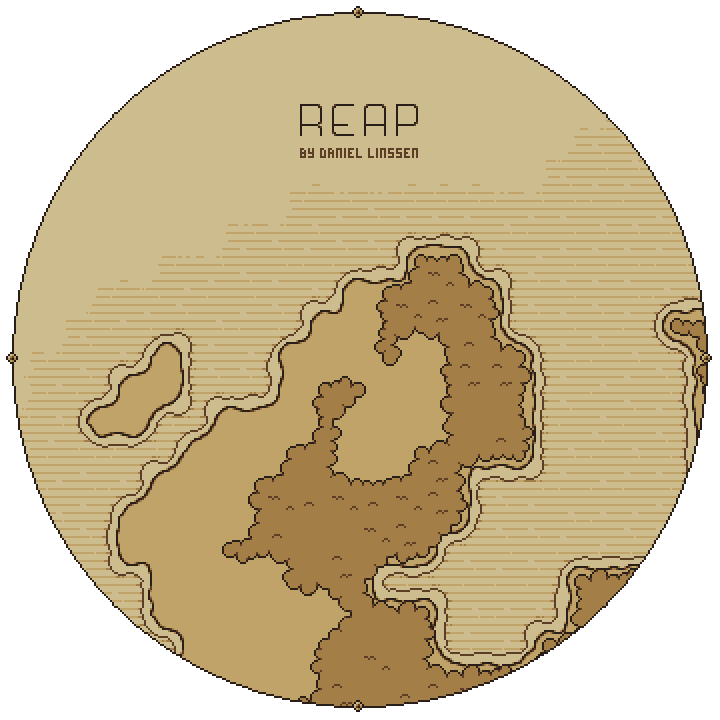
Reap, by Daniel Linssen, manages to convey an incredible sense of exploration with very simple systems.
I find that the key mechanic in this is the map. The map in this game works like a real paper map, it doesn't show your location in real time or at all. You have to look at it then look around you for reference points in the environment to try to situate yourself.
This means that without the map is very easy to get irreversibly lost, and probably die. Whenever I left the confort of my turnip plantation to explore the island, I felt as if I was jumping from a small boat in vast open water, the map being a flimsy safety rope to guide me back.
Exploration feels truly risky, but in a fair way, because you can make it less risky by taking a series of precautions. This ties to the second strong sense that the game conveyed for me: colonization. By colonization I mean the sense of taming one's environment, the sense of transforming a patch of wild land in something like home.
Because to make way through the landscape you have to chop down trees, build bridges and boats and, most importantly, keep a sustainable plantation of turnips. You have to master your surroundings, you need to make them recognizable so you won't get lost, you have to make them less dangerous. There is no level up, the only improvements in your condition are the changes you manufacture yourself in the world your character inhabits.
In this sense, the exploration and colonization parts of the game complement each other perfectly. By giving you the possibility to make a spot safe, it enhances the sense of danger the wilderness around it evokes. And when you are rushing back to your plantation from a ill planned expedition, you will feel true relief once you see a familiar bend in the coast, or a trail through the forest that you opened before.
And all this is achieved with remarkable elegance, the controls limited only to the arrow keys and two buttons.
Also, the art style is creative and pertinent (the colors resembling an old, weathered map). It was actually what first caught my attention.
It's well worth a try. Both for playing fun and to serve as inspiration of how simple choices can achieve a lot.
No comments:
Post a Comment